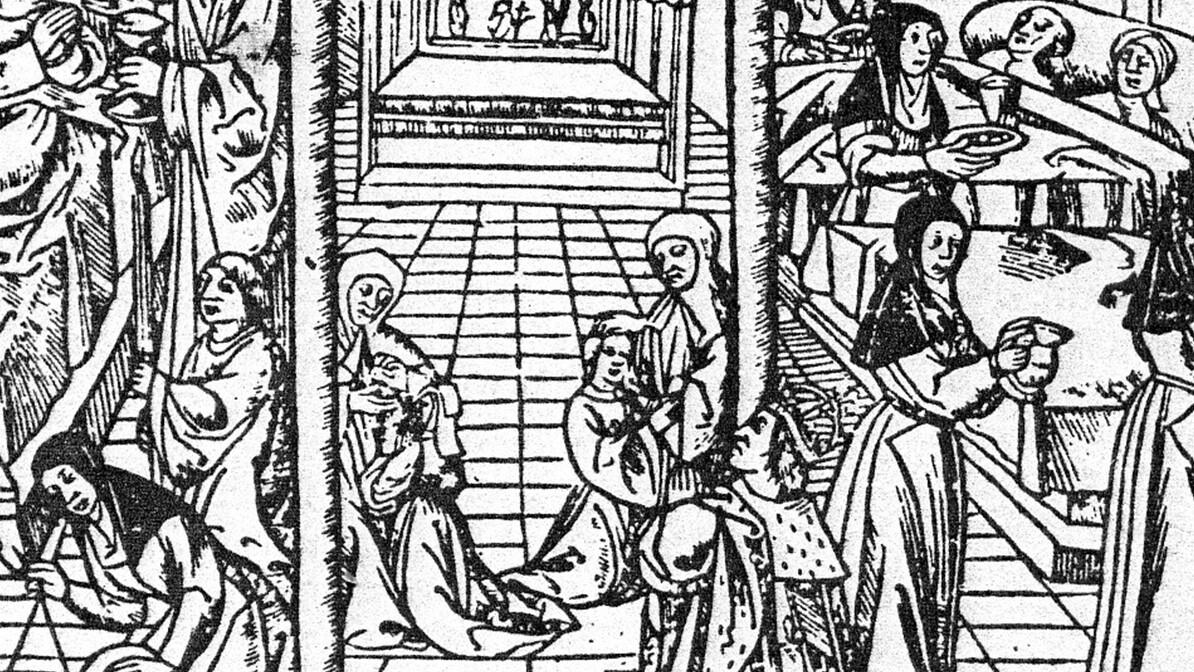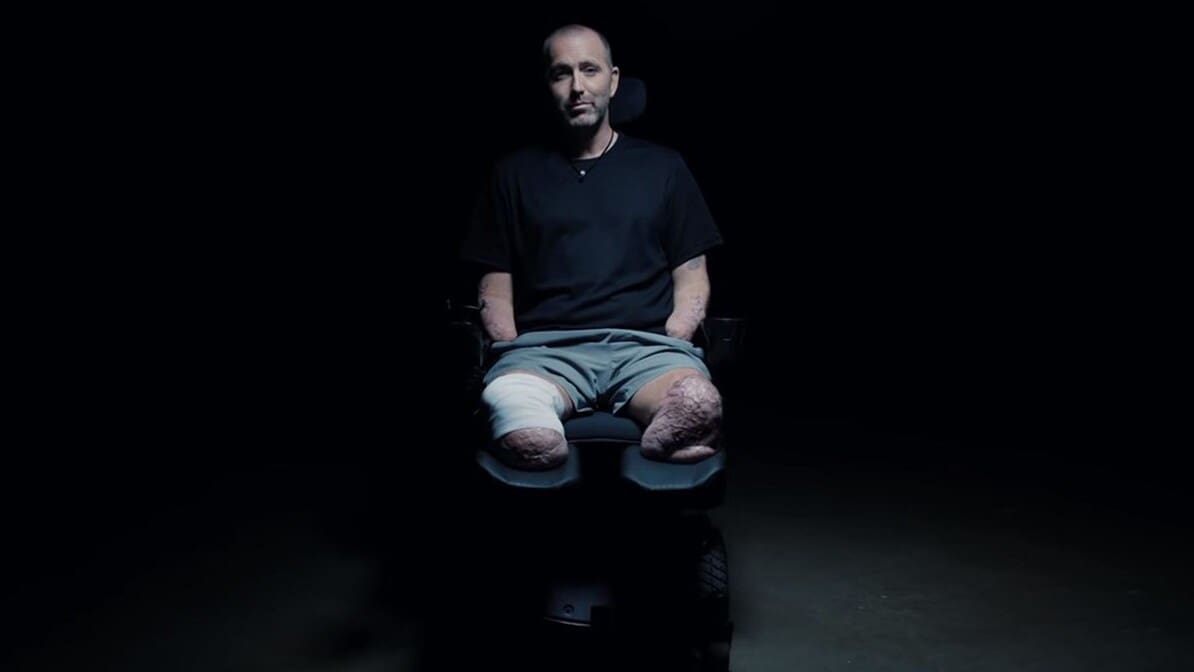
Healthcare & Hospitals Pioneered by Christian Charity (Part 1)
The Byzantine Empire’s School of Nisibis, founded in the 4th century, sometimes referred to as the world’s first university, was a Christian center of scientific and medical learning, located in present-day Turkey.
The Assyrian Christian Bukhtishu family had nine generations of physicians who helped found the great medical academy at Gundeshapur, (5th to 9th centuries), in present-day Iran. The Assyrian Christian physician, Hunayn ibnIshaq, wrote a textbook on ophthalmology in 950 AD, which remained the authoritative source until 1800 AD.
Just as the Syrian Church pioneered medical care in the East, the Catholic Church did in the West. The Catholic Church is the oldest institution in the Western World and the originator of “hospitals.”
Though some ancient cultures had medical practices, often mixed with superstition, it was primarily for the king’s family, his military, and the wealthy ruling elites.
Healthcare for the poor traces its roots to Christianity. In both the East and the West, Christians sought to put into practice the words of Jesus:
- “I was sick and you visited me”;
- “Whatever you have done to the least of my brethren, you have done unto me.”
Christians followed the example of the good Samaritan, spoken of in Jesus’ parable, Luke 10:25-37:
“But a Samaritan, as he traveled, came where the man was; and when he saw him, he took pity on him. He went to him and bandaged his wounds, pouring on oil and wine. Then he put the man on his own donkey, brought him to an inn and took care of him. The next day he took out two denarii and gave them to the innkeeper. ‘Look after him,’ he said, ‘and when I return, I will reimburse you for any extra expense you may have.’”
In the 4th century, under the ministry of St. Jerome, a wealthy Christian widow named St. Fabiola gave money to build a hospital for the poor in Rome and cared for the sick herself. Around the same time, St. Basil distributed food to the poor of Caesarea, then built a poorhouse, hospice, and a hospital.
The Council of Nicea
In 325 AD, the Council of Nicea directed that every city having a cathedral should also have an infirmary or hospital, as people traveling on pilgrimages would often arrive ill. The word “hosp” is Latin for “traveler,” the root word of:
- hospital,
- hospitality,
- host,
- hostel, and
- hotel.
Hospitals were staffed by religious orders.
In the 6th century, the Benedictine Order had every monastery establish an infirmary. Also in the 6th century, a physician, St. Sampson the Hospitable, turned his home in Constantinople into a free medical clinic for the poor.
When Byzantine Emperor Justinian the Great became ill, he sent for St. Sampson. After recovering, the emperor offered to reward Sampson, who requested help establishing a new hospital for the poor, which continued in Constantinople for 600 years.
When sharia Muslim warriors invaded Christian Syria in 634 AD and then conquered Byzantine Christian Jerusalem in 638 AD, the hospitals needed to be defended, giving rise to the order of Knights Hospitaller.
The Benedictine Monastery in Salerno, Italy, founded the oldest and most famous medical university in Western Europe. Most universities were started in monasteries and cathedrals, notably:
- Bologna,
- Paris,
- Naples,
- Toulouse, and
- Oxford.
Charlemagne and European Hospitals
Charlemagne decreed that the hospitals, which had fallen into disrepair, should be restored.
In the 1300’s, the Bubonic Plague, or Black Death, ravaged Europe killing 75 million people. Crops were left standing in fields as there was no one to harvest them. With often no one to bury the dead, an order of Catholic men called “Alexian Brothers” collected the bodies and gave them a Christian burial. They also provided hospice care to the dying who were banished from the cities.
One of the oldest hospitals in Europe was the Hôtel-Dieu in Paris, founded in 660 AD. Beginning in 1217, the Hôtel-Dieu (hostel of God) was staffed by Catholic Sisters following the Rule of St. Augustine. In 1633, the Sisters of Charity began helping at the Hotel-Dieu of Paris. They then established numerous hospitals and schools for the poor throughout France.
Other Catholic religious orders, such as the Trinitarians, collected alms and sailed to North Africa to ransom Europeans who had been kidnapped and sold into Muslim slavery. In 1605, St. Vincent de Paul was sailing from Marseille, France, when he was captured by Muslim Barbary pirates and sold into slavery in Tunis, North Africa. After two years, he was able to convert one of his master’s wives to Christianity, and then his master. In 1607, he escaped back to Europe, and started religious orders to care for the poor in hospitals.
In this era, the wealthy had doctors visit them at their homes, but the poor were primarily cared for at Catholic hospitals. By 1789, there were 6,000 Sisters of Charity running 426 hospitals in France. They also ran hospitals in countries across Europe, such as Poland, Austria, Switzerland, Italy, Spain, and Silesia.
A New Testament verse inspiring the nuns was I Timothy 5:9-10:
“… a widow be taken into the number … well reported of for good works … if she have lodged strangers, if she have washed the saints’ feet, if she have relieved the afflicted, if she have diligently followed every good work.”
During the secular French Revolution’s Reign of Terror, mobs broke into the mother house of the Sisters of Charity. The authorities demanded the nuns deny their faith and submit to the new atheistic government. When they chose to keep their faith, the government rounded them up and shot them. One group of nuns, known as the Martyrs of Compiègne, sang a hymn as one by one they were led up the scaffold and beheaded with the guillotine on July 17, 1794.
In 1793, France’s new anti-Christian government tried to disband religious orders, such as the Sisters of Charity, which cared for the poor. The Sisters of Charity survived, and in the 19th century the nuns spread healthcare for the poor across the world, including: Portugal, Hungary, England, Scotland, Ireland, North and South America, Turkey, Syria, Egypt, Persia, Abyssinia, China, and Jerusalem.
The Catholic Church and Healthcare
Geoffrey Blainey wrote in A Short History of Christianity (Penguin Viking; 2011, p. 214-215):
“(The Catholic Church) conducted hospitals for the old and orphanages for the young; hospices for the sick of all ages; places for the lepers; and hostels or inns where pilgrims could buy a cheap bed and meal. It supplied food to the population during famine and distributed food to the poor.”
More Catholic religious orders were formed to care for the sick, nurse the ill, change bedpans, and start leper colonies, such as:
- Daughters of Charity of Saint Vincent de Paul (founded 1633);
- Sisters of St. Joseph (founded 1650);
- Sisters of Mercy (founded 1827);
- Little Sisters of the Poor (founded 1839);
- Sisters of Providence (founded 1843);
- Sisters of Charity of St. Augustine (founded 1851);
- Damien’s colony for lepers at Molokaʻi, Hawaii (founded 1864). Statues of him are at Hawaii’s Capitol and in the U.S. Capitol;
- Sisters of St. Mary (founded 1872);
- Sisters of the Little Company of Mary (founded 1877);
- Sisters of the Sorrowful Mother (founded 1883).
In an era when most women had family obligations and could only volunteer temporarily as battlefield nurses, the sisters were systematically trained in nursing skills and serve sacrificially their entire lives.
Nursing pioneer Florence Nightingale, who cared for the British troops during the Crimean War, 1853-1856, once said: “What training is there to compare with that of a Catholic nun.”
The nuns’ habit developed into the nurses’ outfit with its distinctive cap.
Beginning in the early 1800s, with the Second Great Awakening and the Industrial Revolution, hospitals were also founded by Protestant Christian denominations, most notably:
- Seventh Day Adventists,
- Baptists,
- Episcopalians,
- Lutherans,
- Methodists, and
- Presbyterians.
Trending Now
Sign up today for your Inspiration Today Daily Newsletter
Supercharge your faith and ignite your spirit. Find hope in God’s word. Receive your Inspiration Today newsletter now!
William Federer
William Federer is a nationally known speaker, best-selling author, and president of Amerisearch, Inc., a publishing company dedicated to researching America's noble heritage. Bill's American Minute radio feature and his Faith in History television broadcast can be viewed daily across America and on the Internet. Learn more at amerisearch.net
Related Articles
December 27, 2025
Praying God’s Word
Praying God’s Word is more than a spiritual exercise—it is a transformative practice that deepens…
November 21, 2025
Thank You … Lord
Gratitude transforms our lives and draws us closer to God. This article explores how practicing…
October 27, 2025
So, Is God Good?
Many people wrestle with the question, is God good, especially when life brings pain and loss.…
September 30, 2025
God Wants to Heal You!
This article is a powerful reminder that God doesn't just want to forgive your sins. He longs to…
Next Steps To Strengthen Your Walk
Inspiration Today Newsletter
Supercharge your faith and ignite your spirit. Find hope in God’s word. Receive your Inspiration Today newsletter now!
Christian Articles
Find articles to strengthen your walk and grow your faith. We have a wide range of topics and authors for you.
Submit A Prayer Request
We are here for you. Simply click on the button below to reach us by form, email or phone. Together we will lift our hearts and voices with you in prayer.





